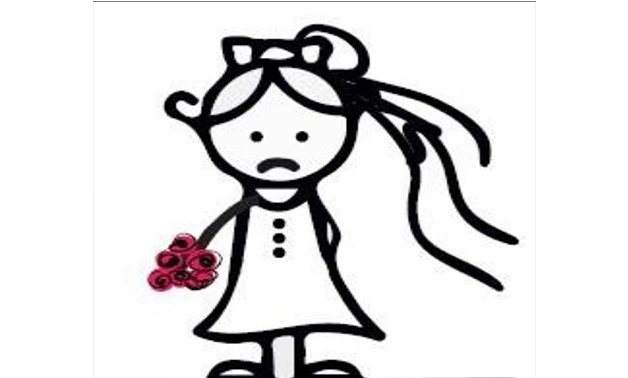
Child Marriage Poster - ABAAD Resource Centre for Gender Equality Facebook page
CAIRO – 4 November 2017: The United Nations Children’s Fund (UNICEF), Save the Children U.K. and Girls Not Brides association will organize a live event on Tuesday, November 7, to discuss the role of laws, policies and targeted programs in ending the practice of child marriage. The event starts on Tuesday at 9 a.m. ET, 2 p.m. GMT, and is part of a broader program on child marriage funded by the Children’s Investment Fund Foundation and the Global Partnership for Education. The event will also include an analysis of global trends of the minimum legal age for marriage, a review of successful interventions that have proven effective in delaying marriage, and case studies of such interventions.
Child marriage affects boys and girls, but to a lesser degree and intensity in boys than girls. In general data on boys affected by child marriage is limited, making it difficult to draw definitive conclusions on it prevalence.
According to UNICEF, every year millions of girls marry before turning 18. The west and central African regions have the highest percentage of married adolescents (27 percent), followed by eastern and southern Africa (21 percent) and the Middle East and North Africa region (14 percent).
Child marriage leads to lower educational achievement and lower earnings in adulthood for girls as a result of their limited ability to work. It also leads to higher fertility and population growth putting more pressure on economies and resources. The practice affects negatively the health of child brides and their children, who are more exposed to malnutrition and poverty.
Furthermore, the practice epitomizes a lack of voice and agency for women as well as harming their health, psychological status leading to social isolation and increased risk of domestic violence. Apart from being a fundamental violation of human rights, ending child marriage is also a smart economic investment considering its high economic and development cost.
Many factors contribute to placing a girl at risk of marriage, including poverty, the protection perception, family honor, social norms and customary and religious laws that condone the practice. Therefore, there is a need for an adequate legislative framework that makes civil registration of marriages mandatory as a mean to fight the practice.
Many international conventions and agreement addressed the issue of child marriage. For example, the Convention on the Elimination of All Forms of Discrimination against Women (CEDAW) covers the right to protection from child marriage in article 16, which states: “The betrothal and the marriage of a child shall have no legal effect, and all necessary action, including legislation, shall be taken to specify a minimum age for marriage….”
The right to “free and full” consent to marriage is recognized in the Universal Declaration of Human Rights, which says that consent cannot be “free and full” when one of the parties involved is not sufficiently mature enough to make an informed decision about a life partner. Although marriage is not mentioned directly in the Convention on the Rights of the Child, child marriage is linked to other rights; such as the right to freedom of expression, the right to protection from all forms of abuse, and the right to be protected from harmful traditional practices and is frequently addressed by the Committee on the Rights of the Child.
Other international agreements related to child marriage are the Convention on Consent to Marriage, Minimum Age for Marriage and Registration of Marriages, the African Charter on the Rights and Welfare of the Child and the Protocol to the African Charter on Human and People’s Rights on the Rights of Women in Africa.
For more information visit the hashtag #EndChildMarriage

Comments
Leave a Comment